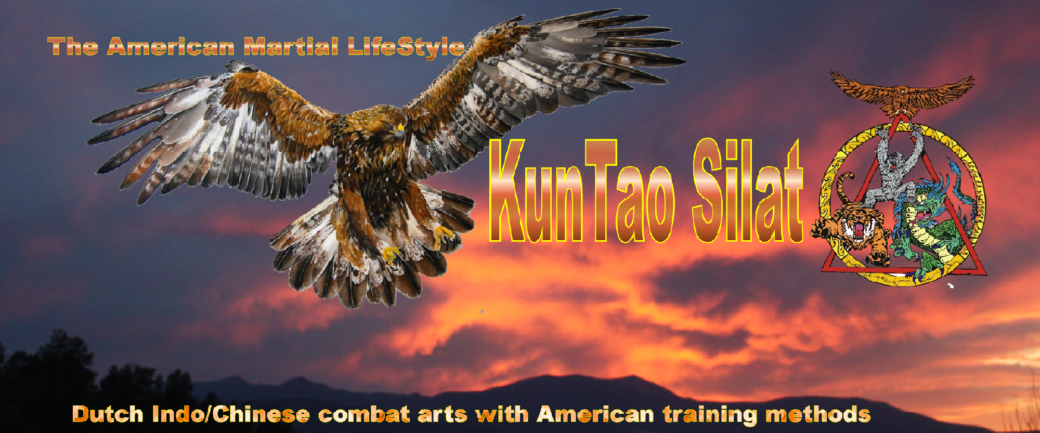Welcome to KunTao Silat ~ the American Martial LifeStyle › Forums › Learning KunTao Silat › Seasoned Practitioners › Hips/Pelvis vs Waist turning to generate power
Tagged: external, internal, turning exercises
- This topic has 3 replies, 3 voices, and was last updated 9 years, 2 months ago by
 Fabrice.
Fabrice.
-
AuthorPosts
-
-
March 11, 2016 at 2:47 pm #4540
 FabriceParticipant
FabriceParticipantHello everyone.
What is your take on Hips/Pelvis rotation vs Waist rotation? I just watched the basic video for AKTS and noticed all the triangle exercises are based on hips rotation using muscle force. From my personal experience, you get much more power from waist rotation using tendons elasticity.
What is your personal experience between these 2 methods if you have any?
Thanks
Fabrice
-
March 11, 2016 at 4:59 pm #4541
Christopher
ParticipantThe way I understood the videos was that hip power is built into the pivoting movements, but waist turning and whip power are present in the internal movement later in tape 1, and in the waist-turning in the first stance.
So far I’ve interpreted it that there’s turning power with the pivoting of feet, spring power from the coiled stances (djuru 1, satu and the greeting sequence. forgot what the cat-stance is called in Chang style but it has a lot of potential from my experiments), whip-power that’s done with feet in place (waist-turning included), dropping and springing up.
When I do the initial waist-turning and striking improv, I use several methods to generate power. One thing I like to do is sort of like fajin training: I throw strikes where I try and feel the power undulating up my spine, if that makes any sense.
I got into the practice because ages ago, I had seen some video clips of Rick Hernandez and our own Steve Gartin showing their striking skills. The loose and whip-like movement seemed useful so I started building the foundation with practice of the arm swings. I’d simply keep my body so limp that only my spine was holding me up and I’d use very short hip turning and spine motion to turn. When I could turn that into a nice sequence I learned to cast the same type of power into any plane of motion I cared about with a punch, palm, elbow or whatever, but I still have a ways to go to find the potential in this little pursuit. For me it comes down to feeling the “energy”. I could be using all hip, waist, springing steps, falling off a building onto a guy, and it all would work. What matters is that I put in enough kinetic energy to stop the guy without serious harm to myself. -
March 12, 2016 at 7:02 am #4542
 SteveKeymaster
SteveKeymasterThe first method we show is the silat method, where although there is not as much power generated in the turning motion, the turning motion itself becomes the energy for the throw while the interaction of your legs moving against your opponent’s creates the displante. The hitting power then combines with the energy of the throw to dispatch the adversary.
The waist turning you will see later in the first part of the Chang style introduction, which is kuntao. You’ll notice that the forearms and elbows provide the major hitting mechanisms because of our penchant for close quarters ~ even in the kuntao.
So, because our art is a synergism of two unique, but complementary, methodologies KTS practitioners learn both methods ~ beginning with the silat because it is simpler to understand and apply and evolving into the kuntao because it takes longer to feel and develop the internal mechanics that gives the KTS practitioner another set of combat tools to develop.
At some point along the way both methods will meld together in application so that a KTS practitioner then has myriad options when dealing with combat situations.
Nice work GentleMen! Thanks for bringing this topic up.
Steve -
March 12, 2016 at 9:57 am #4543
 FabriceParticipant
FabriceParticipantHi Christopher and Steve.
Thanks for the info. Looking forward to the later videos to see how you combine both method of movements.
Have a great day.
Fabrice
-
-
AuthorPosts
- You must be logged in to reply to this topic.
Share this:
- Click to share on Facebook (Opens in new window) Facebook
- Click to share on X (Opens in new window) X
- Click to share on LinkedIn (Opens in new window) LinkedIn
- Click to email a link to a friend (Opens in new window) Email
- Click to print (Opens in new window) Print
- More
- Click to share on Pinterest (Opens in new window) Pinterest
- Click to share on Reddit (Opens in new window) Reddit
- Click to share on Tumblr (Opens in new window) Tumblr
- Click to share on WhatsApp (Opens in new window) WhatsApp
- Click to share on Pocket (Opens in new window) Pocket
- Click to share on Telegram (Opens in new window) Telegram
